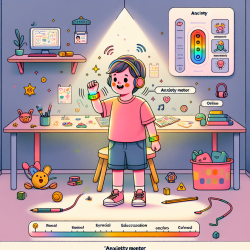Understanding the Arcuate Fasciculi: A Key to Bilingual Reading Success
In the realm of speech language pathology, the arcuate fasciculi (AF) have long been recognized as vital neural pathways for language processing. Recent research, particularly the study titled Left and Right Arcuate Fasciculi Are Uniquely Related to Word Reading Skills in Chinese-English Bilingual Children, provides valuable insights into how these pathways influence reading skills in bilingual children. This study offers a data-driven approach to understanding the unique neural substrates that support reading in different languages, specifically English and Chinese.
The Study: A Closer Look at the Arcuate Fasciculi
The research conducted by Gao et al. (2022) examined Chinese-English bilingual children to explore the relationship between reading skills and the structural properties of the arcuate fasciculi. Using diffusion tensor imaging (DTI), the study found that both English and Chinese reading skills were positively correlated with the fractional anisotropy (FA) in the left AF. Interestingly, English reading was further linked to the caudal part of the left AF, correlating with phonological awareness, while Chinese reading showed a positive correlation with the right AF, associated with visual spatial ability.
Implications for Practitioners
For speech language pathologists and educators, these findings underscore the importance of tailored approaches in bilingual education. Here are some practical applications:
- Phonological Awareness for English Reading: The study highlights the significance of phonological awareness in English reading skills. Practitioners should incorporate phonological exercises, such as phoneme deletion tasks, to enhance reading proficiency in English.
- Visual Spatial Training for Chinese Reading: Given the correlation between visual spatial ability and Chinese reading skills, integrating visual spatial tasks into the curriculum can support Chinese literacy development. Activities that involve pattern recognition and spatial orientation could be particularly beneficial.
- Cross-Language Strategies: Recognizing the shared neural substrates for reading in both languages, practitioners can develop cross-language strategies that leverage common cognitive skills, such as mapping visual symbols to sounds.
Encouraging Further Research
While this study provides a solid foundation, it also opens avenues for further research. Investigating the developmental trajectory of these neural pathways and their interaction with other cognitive skills could offer deeper insights into bilingual reading acquisition. Moreover, exploring the role of environmental factors, such as exposure to language and educational practices, could enhance our understanding of how these neural mechanisms are shaped.
Conclusion
The study by Gao et al. (2022) offers a compelling look at the neural underpinnings of bilingual reading skills, emphasizing the role of the arcuate fasciculi. By applying these findings, practitioners can better support bilingual children in developing strong reading skills in both English and Chinese. As we continue to unravel the complexities of bilingual language acquisition, data-driven approaches will remain essential in creating effective educational strategies.
To read the original research paper, please follow this link: Left and Right Arcuate Fasciculi Are Uniquely Related to Word Reading Skills in Chinese-English Bilingual Children.










